This is the introduction to a series of articles that will comparatively explore the slew of tabletop roleplaying games that have spawned from old school gaming movement. This is often known as the 'OSR' which means 'Old School Revival' or 'Old School Renaissance.' This article will be discussing some of the key design principles that tie these many varied games together.
These roleplaying games are ostensibly inspired by the original versions of D&D such as original D&D, the Basic & Expert line of D&D as well as AD&D. You can read more about those here.
Whilst some of these retro clones, such as Old School Essentials, are faithful recreations of the original rules, other games like Mothership take the aesthetic and principles but turn themselves into something new. In the case of Mothership by changing the genre to Sci-Fi Horror, adding mechanics like stress and switching to a d100 roll under system.
However in all cases these games tend to follow a similar set of principles which we will now discuss.
Emergent gameplay
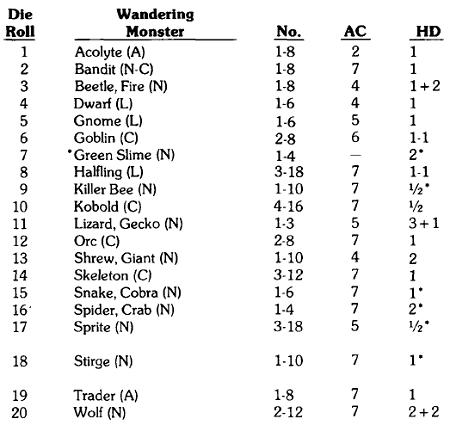
D&D Random Monster Encounter Table
Through mechanics such as random encounter tables, rumour tables, weather tables, reaction rolls and wilderness and dungeon exploration structures old school games encourage emergent play. In practice this means that both the players and the GM cannot be sure at the start of a play session what will happen. This is because the events of the game will be determined by a mixture of the players actions and choices as well as the results of the mechanics and dice rolls.
For example in a game of Basic & Expert D&D the players may start in a woodland village, decide to head south into the forest and get a random encounter roll of 5 Bugbears whose reaction is friendly. The GM may then improvise that the Bugbears are simply hungry and want to trade because the loggers in the village are destroying their hunting grounds. The players could then decide to aid the Bugbears in stopping the loggers, or may decide to fight the Bugbears anyway, or might just walk away.
This is just one of a myriad of potential outcomes in a game ran with the principle of emergent play, the party may have instead gone north into the mountains and got attacked by a Manticore, or the weather table may have produced a storm in which case the players may just have decided to stay in the village and help the innkeeper with their rat problem.
Player Agency

Player agency is heavily emphasised in old school games. This means that players in the game are given a wide scope of decision making. This applies in both a macro sense of what direction to travel in, whether to fight or flee from a band of soldiers or whether to explore a haunted tower. It also applies in a micro sense through decisions such as what equipment and resources to spend gold or what retainers to hire. This ties in with the above discussed principle of emergent play as for emergent play to work players have to be able to make decisions within the game and have those decisions ultimately matter.
As a result of this principle old school games tend to be designed with sandbox or open design structures as these structures emphasise player agency by offering a wide range of options on how to approach the game world. The classic example of these are the wilderness and dungeon crawl.
Wilderness exploration is the 'quintessential' sandbox as it gives players freedom to explore a large environment in any way they wish. This map, usually drawn on a hexgrid, can include a mixture of locations that the GM has designed for the players to find such as a town, a monster lair or an ancient ruin and be further spiced up with emergent elements such as random encounter tables.
Whilst a dungeon crawl seems more limited in scope than a wilderness crawl old school dungeons are typically designed in a way that encourages multiple approaches. This term of design is often referred to as 'Jayquaying' after Jennel Jaquay who wrote a lot of early published D&D dungeons such as the Caverns of Thracia.
These varied approaches can include literal physical ones, such as a dungeon having multiple entrances and routes to explore. They can also include varied roleplay approaches such as dungeons having multiple factions within that can be bargained with or played off of one another. A dungeon can also fit neatly into a wilderness map with players making a foray into the dungeon, retreating and then perhaps returning at a later time to delve deeper.
Rules Lite
Smithy of Sacrilege by Sean F Smith an 'old school' rules set on a postcard.
Old school games typically have a simple core of rules making them quick to pick up and play. Rules focus more on gameplay structures than specific minutia. For example a game may include rules on how to structure wilderness exploration but wont include rules that cover every specific situation that may arise when exploring the wilderness. Nor do they typically include large lists of character skills for hunting, survival, tracking, wood collecting and so on. Instead they allow players to declare what actions they want to take in the game and leave it to the GM to adjudicate.
This practice is known as 'Rulings not Rules' whereby the GM running the game will make up rulings during play that suit what players want to do rather than being beholden to the rules text. This also further encourages player agency as players have a lot more flexibility to make choices within a game where they aren't as worried about whether the rules will allow them to do a thing.
Character creation tends to be quick, simple and typically randomised in old school games. In original D&D you would roll 3d6 in order for each of your characters statistics, roll your HP, pick a class and some equipment and you're ready to play. This lowers the complex load of creating a character and lets you get straight into play.
High Lethality & Low Power Level

Artwork from D&D Module B2- The Keep on the Borderlands portraying combat between a party and an owlbear.
Within the original D&D rules set Magic Users would start with d4 hit points and 1 spell. When you reached 0 hit points you died and most weapons did d6 damage. This sets the tone for old school games. Character's can die incredibly quickly and easily and tend to be limited in terms of their power. This forces players to be creative as to how they approach situations in the game as they can't as easily rely on their characters overall strength
This ties into the simple rules of old school games. Quick character creation means that a character dying isn't as frustrating as a new one can be made in 15 minutes or so. A low power level suits a rules lite game as characters tend to have significantly less abilities to remember in play. In a wider sense this also serves as counterbalance towards the open nature of old school games as it limits the player characters power into a far more manageable realm of actions and can often deliver harsh consequences in the form of character death if players push too hard into the unknown.
Many old school inspired games, for example Mothership, riff off of the high lethality and low power design by framing themselves within the horror genre. This genre suits a game where characters can die easily and are typically weaker compared to the horrors. This genre also puts an emphasis on survival which a key component is managing resources.
Resource Management

Resources tend to be emphasised within old school inspired games. This includes the likes of food, water and gold as tracking encumbrance. In original D&D the core progression mechanic was 1 experience point per gold piece that the party found. This mechanic encouraged exploration and also resulted in risk reward decisions. Carrying too much gold would slow you down and therefore risk more random encounters in the wilderness but you needed that gold to advance. It also made planning expeditions important, for example bringing pack animals would help you carry that additional load of treasure and gold however it may also make you prey to wild animals such as wolves and make it more difficult to evade enemy groups in the wild. Many old school inspired games use a similar gold for XP progression mechanic and even those that don't still emphasise tracking of resources and survival elements as a key gameplay components.
The games being rules lite allow more space for the tracking of items and encumbrance. Equipment also forms a far more important role within the game as it works as a quite literal toolkit to resolve problems. This is often key as the low power level of the games means that players can't solely rely on their characters skills, spells and abilities to resolve problems and have to think their way laterally through situations.
For further reading you can look at the Principia Apocrypha which discusses some of these principles in more details.
In our next article we are going to start exploring the various old school gaming systems with a look at Old School Essentials a faithful retroclone of B/X D&D. Read it here.

Thanks for reading! If you're interested in a trio of old school fantasy adventures check out Albion Tales.
Subscribe to the Leyline Press newsletter here to receive updates on our blogs, promotions, games and more.
Follow us on twitter @leylinepress
Follow us on facebook @leylinepress
Follow us on instagram @leylinepress
Subscribe to this blogs RSS feed by pasting this into your feed reader - https://leyline.press/blogs/leyline-press-blog.atom
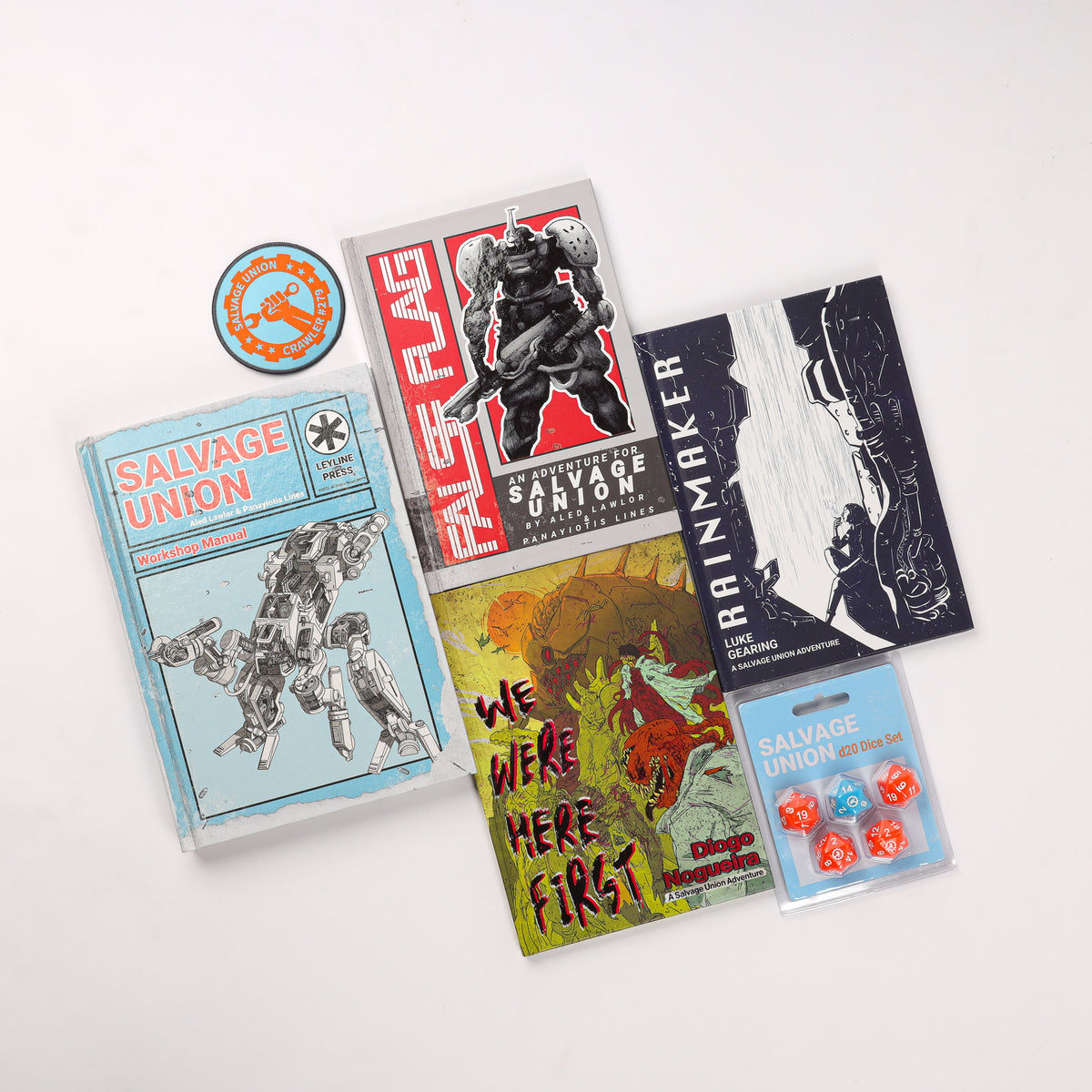
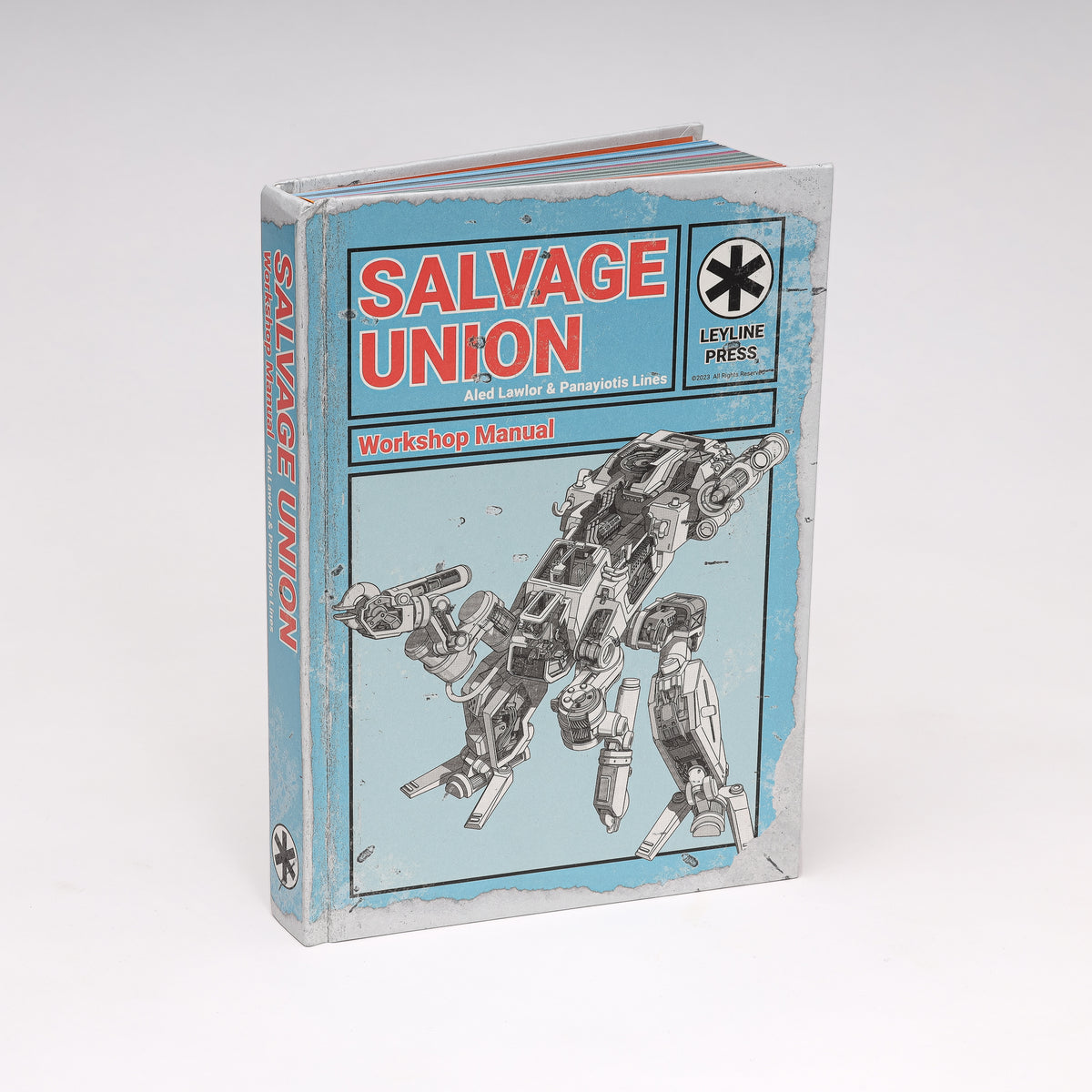

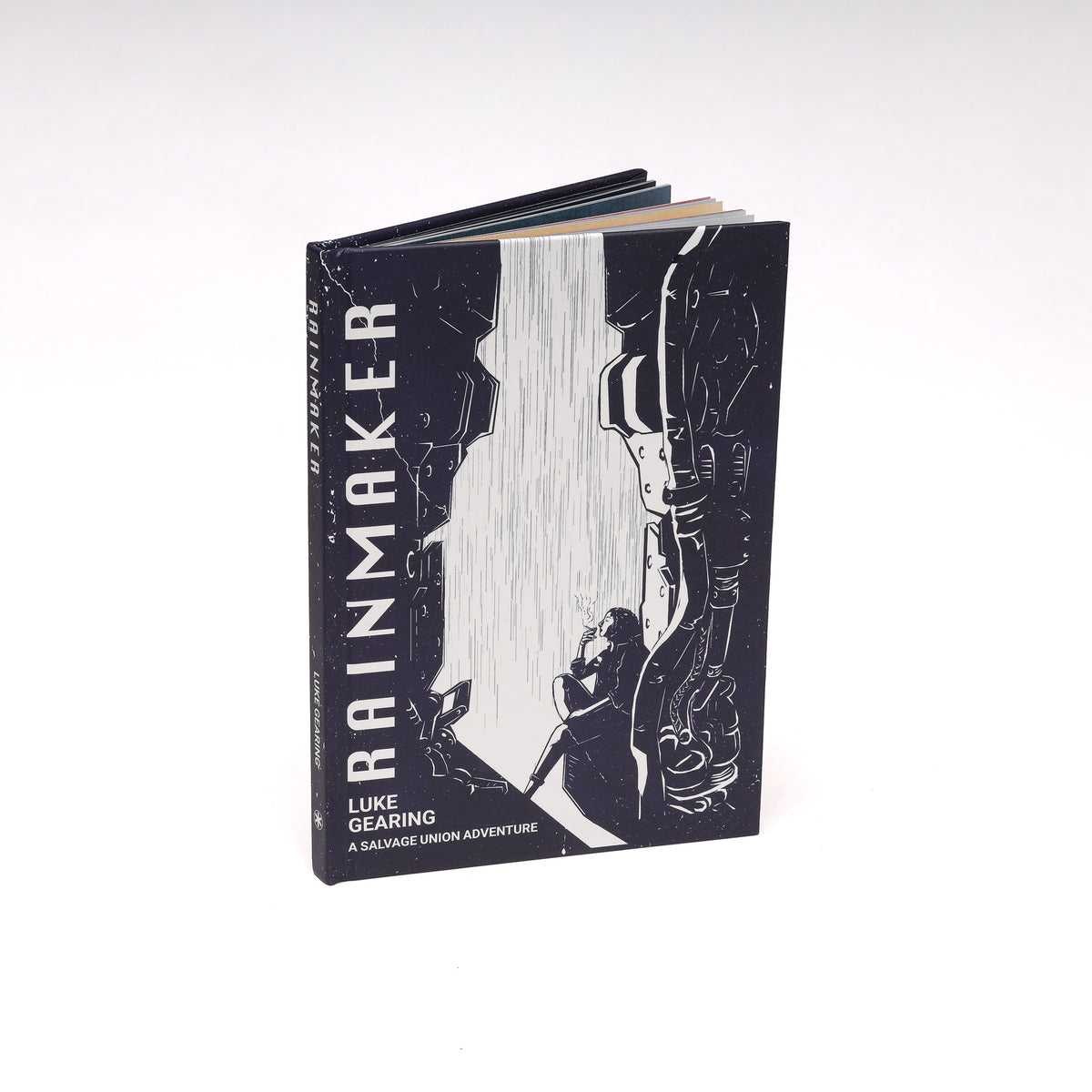


1 comment
Excellent! I really like the bugbear example. I am looking forward to the next posts.